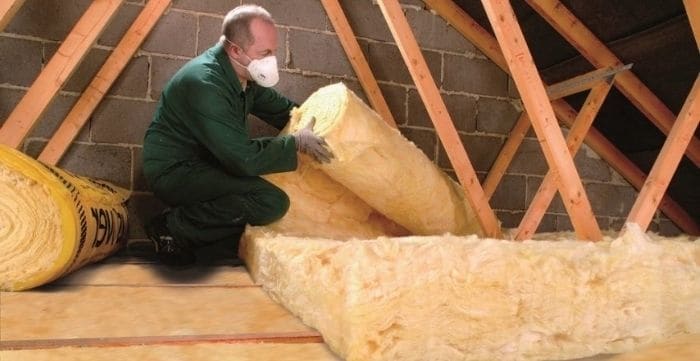
You can install insulation material yourself , though a professional installer can do a better job. Because most of the heat loss can happen through your home’s roof, it’s considered to be the best way you can take to have year-round comfort. There are various methods and materials to use, but the prices tend to vary depending on the way you want to utilize the loft. This post discusses everything you need to know about loft insulation.
Loft Insulation
Loft insulation is simply any kind of insulation that you can install in the loft of your house. In loft insulation, you can install a layer of material like wool in the loft to create a barrier that prevents heat loss during winter and assists to keep your house cool in summer.
You can choose to lay the insulation material between the roof’s joists, which are the beams placed horizontally across the floor. You can also install insulation between the rafters which are the angled beams supporting the roof. Insulation can work well regardless of the part of the loft, meaning it can hold in heat by lowering heat loss.
Also, where you decide to place the insulation can have a direct effect on how to use the loft. If you insulate between the joists, then it means that the living space can be warm while the loft can be cold. This is called a cold loft and is ideal for storing items. But if you install insulation materials in the rafters, it can help you to keep the house and loft space warm. This gives you the chance to utilize the loft as a living space or spare room.
There are many benefits you can have by installing insulation in your loft. This includes increased energy efficiency, increased value of the house, and reduced heating bills. Besides these benefits, a loft insulation is easy to do and affordable to make it a good option for improved comfort.
It’s worth noting that the loft happens to be one of the areas of the house that has the highest amount of heat loss. The truth is that all heat escapes are through your roof. Therefore, insulating this part of the house can be an effective way to stop the heat loss and to keep your house warm in winter.
Loft insulation also tends to have an extended lifespan to help you to make huge savings on energy bills. This insulation can last up to 40 years, so this allows you to recover your initial costs and even save when it comes to reduced annual energy bills.
It’s also worth mentioning that there are many environmental benefits. Good loft insulation can lower your house’s carbon footprint as well as fight climate change. Since there is a decrease in heat loss, it means your house can retain heat for longer. As a result, there is less amount of fossil fuels you require to keep your house warm. Besides this, you can use Utility Bidder to help you find the best energy tariffs.
Suitability for Your Home
The good thing is that you can find a variety of loft materials and the installation is easy. You can decide to do it yourself with no professional help. Loft insulation is not like other insulation types, such as cavity wall insulation that need specialist equipment.
This ease of installation together with some savings on energy bills makes a loft insulation a good option. There are several things you need to think about before you decide whether or not loft insulation is suitable for you.
A loft needs to have an easy access, have no ongoing mold or damp problems, have evenly spaced joists, and should be a non-flat roof. If you don’t experience these problems, then you can insulate your loft. But if there are any of these problems, you need to first contact a professional installer for an assessment of your loft space.
It’s worth noting that flat roofs can always be insulated using a professional installer. A professional can also deal with the mold, damp, or leaks before they can insulate it. Without doing this, there are good chances that you can damage your new insulation to make it ineffective.
There are also various insulation methods, but this depends on how you intend to utilize the loft. A cold loft is one of the popular layouts in many houses. To make a cold loft, you have to place the insulation over the joists.
This can keep your house warm, though the loft space can be either hot or cold depending on the season. Remember a cold loft can be quite easy to install and is more affordable than other types. You can use the loft for storage, but you may need to raise the floor level.
Another insulation method is called a warm loft that is suitable for storage and for keeping the loft space and home during the cold season and cool in summer. Making a warm loft can involve insulating between your rafters. This is a good set up if you have items for storage that are sensitive to specific temperatures. The only problem with this is that they can be hard to install, so you need to hire a professional for installation.
Room in roof insulation can be suitable for your house if you desire to utilize the loft as a living room or spare bedroom. But you have to make sure that the ceilings and walls between the loft and the space that is not heated are insulated.
Room in roof refers to when you install insulation between the rafter, and the current plaster walls that can be installed as a portion of a conversion to a room. Room in roof insulation should also be done by a professional.
Leave a Reply